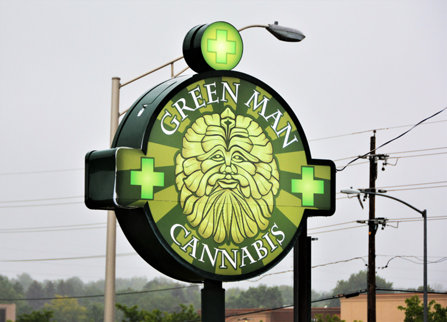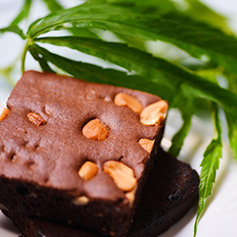Marijuana Legalization Seven Years Later

Where is marijuana legalization taking us? What will be the result of legalization in the years to come for the states that have already legalized? Much of the apprehension over marijuana legalization comes from the fact that we just don’t know what the long-term effects will be.
Or do we?
Why not look at the current situation in Colorado? Why not examine drug-use trends there? One of the first states to legalize marijuana for medicinal and recreational use, Colorado could offer us some insight into the long-term effects of legalization. Colorado voted to legalize marijuana seven years ago, finalizing and passing the laws in 2014. So that’s half a decade of legalized marijuana use in Colorado. What are things like in that state today?
New Reports on Colorado
An August 5th press release in U.S. News discussed drug-use trends in Colorado. The research revealed that teens are now more likely to move on to other types of cannabis consumption as compared to just “smoking weed.” That was, and is, one of the concerns about marijuana legalization, that legalizing the drug could set a precedent for other types of drug use, or at least for different variations of marijuana use.
The U.S. News article cited research from an August 5th publication in the Journal of the American Medical Administration, Pediatrics Edition.
Quoting the introduction of the JAMA Pediatrics research paper: “Smoking is the most prevalent mode of marijuana consumption among adolescents, but nonsmoking modes, including ingesting, vaporizing, and dabbing, have expanded in the context of legalization. Each mode of consumption has different effects that may be associated with distinct health consequences.”
The study goes on to talk about how young people in Colorado have begun to move away from smoking marijuana. While statistics on smoking have gone down, statistics on the consumption of “edibles” have gone up. So have statistics on “dabbing.” [Dabbing is “vaporizing concentrated marijuana,” according to the Urban Dictionary.]
“The use of “edibles” rose fivefold—from only about 2% of pot-using teens in 2015 to almost 10% two years later. The popularity of “dabbing”—smoking marijuana extracts or concentrates, not the raw leaf —rose from 4.3% of teen pot users in 2015 to 7.6% by 2017.”
Quoting U.S. News: “Among Coloradan teens who use pot, about 87% said in a 2015 survey that they smoked the drug but that number had fallen to about 78% when the same survey was taken in 2017. The use of “edibles” rose fivefold—from only about 2% of pot-using teens in 2015 to almost 10% two years later. The popularity of “dabbing”—smoking marijuana extracts or concentrates, not the raw leaf—rose from 4.3% of teen pot users in 2015 to 7.6% by 2017.”
The information out of Colorado is concerning because one could argue that consuming edible cannabis products and engaging in dabbing is riskier than merely smoking marijuana. That argument avoids the fact that all forms of marijuana consumption carry harm and risk. But, to be fully informed, let’s take a brief look at these forms of drug use.
Edibles and Dabbing

The JAMA Pediatrics study authors cite the primary concern over edibles and dabbing is that these types of drug use expose the user to higher levels of THC. Simply stated, teens are exposed to a more potent, more mind-altering version of marijuana when they consume edibles or “dab.” As compared to smoking the cannabis leaf, consuming edibles or dabbing delivers far more THC to the brain, resulting in a more potent high. This can also bring about tolerance-building and potential withdrawal symptoms.
Again quoting the research, “Different modes of pot ingestion carry unique psychoactive associations, and potential harms including unintentional overconsumption of edibles and an increased physiological tolerance and withdrawal associated with the high tetrahydrocannabinol [THC] levels of cannabis concentrates used for dabbing.”
Dabbing is defined as the inhalation of a concentrated THC product via a butane extraction method. While this approach is not necessarily new, it has become more frequent in Colorado since the state legalized the use of marijuana. We have to concede that there is a significant lack of research on the potentially increased harm when a teen goes from smoking marijuana to dabbing. We know what we know about the likely dangers of consuming a more potent version of a drug, but that is general knowledge, not yet backed up by scientific research in the case of marijuana.
The American Academy of Pediatrics discusses some of the hypothesized risks in dabbing. But this research also contends that not enough studies have been done yet to prove a significant increase in risk when young people go from smoking marijuana to dabbing. However, the research does note that dabbing delivers a drug to the user’s brain that is about 80 percent THC. Traditional inhalation of marijuana is likely to provide THC potencies at 7-14 percent. We can hypothesize that such a difference in the strengths of the drug could lead to more harm from consuming the drug.
It’s a similar story with the consumption of edibles. Here, too, is a means of ingesting a more potent drug with a more intense concentration of THC. This route is by eating a foodstuff, usually a baked good, that has cannabis products baked into it. Such a route delivers more THC than smoking cannabis, and users may experience negative repercussions as a result.
In Conclusion

The research out of Colorado shows us that other types of marijuana consumption have gone up since 2015. While we cannot prove beyond a reasonable doubt that these modes of consumption are definitively more dangerous than merely smoking marijuana, can’t we all agree that it would be better if our kids did not use marijuana at all?
In a perfect world, the younger generation would be drug-free. Our youth wouldn’t be using marijuana at all. That is the goal we should reach for. We should keep our fingers close to the pulse of scientific research, and we should stay updated on what researchers do uncover about dabbing and the consumption of edibles.
Until then, we should encourage our youth to stay away from drugs in general. We shouldn’t be reasonable or neutral about this. We shouldn’t adopt the viewpoint that “Some types of drug use are not as harmful as others and are therefore okay.” We need to maintain that there is never a good reason to experiment with any types of drugs, no matter what kind.
We should also support educational efforts to get all Americans, not just our youth, better educated on marijuana. There is a strong lack of understanding of the harms and risks of marijuana consumption. That lack of knowledge is probably part of what has led to certain states legalizing the drug. If youth, adults, parents, politicians, etc. really understood the harms of marijuana, there probably wouldn’t be such a push towards legalization.
Sources:
- https://www.usnews.com/news/health-news/articles/2019-08-05/after-pot-legalized-colorados-teens-moved-from-smoking-to-edibles-dabbing
- https://jamanetwork.com/journals/jamapediatrics/article-abstract/2747325
- https://pediatrics.aappublications.org/content/136/1/1
Reviewed by Claire Pinelli, ICAADC, CCS, LADC, MCAP, RAS


